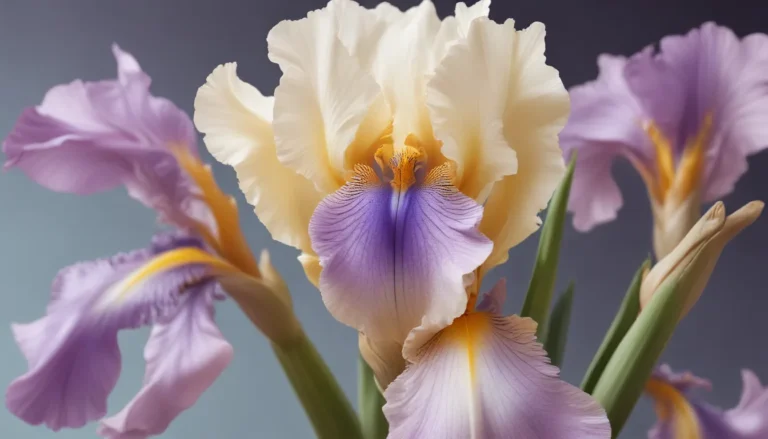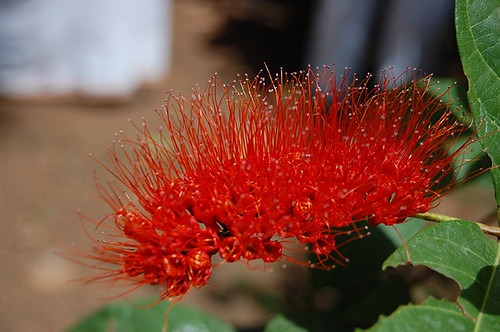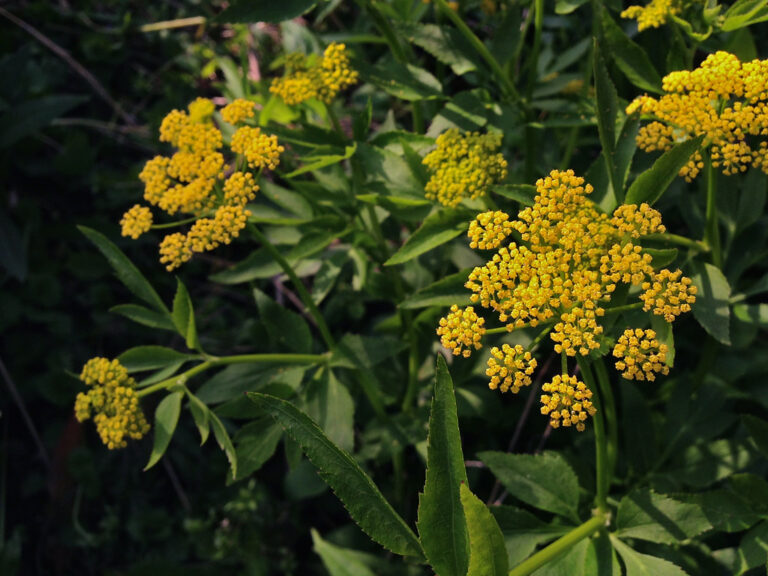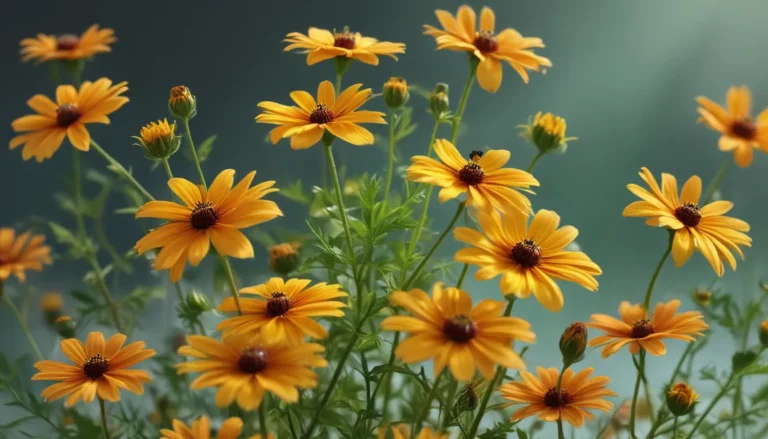The pictures we use in our articles might not show exactly what the words say. We choose these pictures to make you interested in reading more. The pictures work together with the words but don’t take their place. The words still tell you the important facts.
Are you ready to embark on a journey into the vibrant world of Garden Croton, also known as Codiaeum variegatum? This stunning tropical plant is celebrated for its flamboyant foliage and bold colors that can truly transform any garden or indoor space. Join us as we unravel 20 mind-blowing facts about the Garden Croton that will deepen your appreciation for this remarkable species.
Discovering the Allure of Garden Croton
Garden Croton, with its vibrant colors and air-purifying abilities, is a low-maintenance plant that adds a touch of tropical beauty to any setting. Native to Southeast Asia, Garden Croton symbolizes boldness and vibrancy, attracting butterflies and enchanting all who encounter it. Whether you're an experienced gardener or a curious plant enthusiast, the Garden Croton is sure to captivate your heart.
The Multifaceted Colors of Garden Croton
One of the most striking features of Garden Croton is its diverse range of hues. From deep greens and yellows to bright oranges and reds, the leaves of this plant exhibit a kaleidoscope of colors that can brighten up any corner of your garden or home.
Journey to the Tropics: Origin of Garden Croton
Originating from Indonesia and Malaysia, the Garden Croton thrives in tropical climates, embodying the lush beauty of its native lands. Loved by landscapers and garden enthusiasts alike, this plant brings a touch of exotic flair to any outdoor or indoor space.
A Bouquet of Varieties
Garden Croton comes in a variety of cultivars, each with its own unique leaf colors and patterns. From the vibrant green and yellow leaves of the Petra variety to the deep red and purple foliage of the Mamey variety, there is a Garden Croton to suit every taste and style.
Embracing the Light: Sunlight Requirements
To ensure the optimal growth of Garden Croton, bright indirect light is essential. Placing the plant near a window where it can receive filtered sunlight is ideal, allowing it to thrive without the risk of leaf damage from direct sunlight.
Purifying the Air: Health Benefits of Garden Croton
In addition to its aesthetic appeal, Garden Croton is renowned for its air-purifying properties. By removing toxins from the air, this plant not only enhances the visual appeal of your space but also contributes to improving indoor air quality.
Quenching the Thirst: Watering Tips
Maintaining consistently moist soil is crucial for the well-being of Garden Croton. Be sure to water the plant regularly, allowing the top layer of soil to dry out between waterings. Avoid overwatering, as it can lead to root rot and other issues.
Embracing Warmth: Sensitivity to Temperature
As a tropical plant, Garden Croton is sensitive to cold temperatures and should be kept indoors or in a heated greenhouse in colder regions. Exposure to drafts or temperatures below 60°F (15°C) can harm the plant, so it's essential to provide a warm and nurturing environment for its growth.
Unveiling the Texture: Leathery Leaves
The leaves of Garden Croton boast a unique leathery texture that aids in retaining moisture, allowing the plant to thrive in its natural tropical habitat. This adaptive feature enhances the plant's resilience and contributes to its overall health and vitality.
Exploring Traditional Medicine: Healing Properties
Parts of the Garden Croton plant have been utilized in traditional medicine for their healing properties. Extracts from the leaves and roots are used in some cultures to treat various ailments, including skin conditions and digestive issues, showcasing the plant's diverse benefits.
Dancing in Humidity: High Humidity Requirements
Thriving in high humidity environments, Garden Croton benefits from regular misting or placement on a tray of water and pebbles to increase humidity levels around the plant. Maintaining optimal humidity ensures the plant's lush foliage and overall well-being.
Embracing Interior Spaces: Popularity as a Houseplant
Garden Croton is a favorite among indoor plant enthusiasts for its vibrant foliage and low maintenance needs. Its tropical elegance adds a touch of luxury and color to any interior space, making it a popular choice for home decor.
Welcoming Butterflies: Nature’s Visitors
The colorful and nectar-rich flowers of Garden Croton attract butterflies and other pollinators, creating a harmonious ecosystem in your garden. By welcoming these beautiful creatures, you can enjoy the enchanting sight of fluttering wings amidst the vibrant foliage.
Bridging Indoors and Outdoors: Versatile Growing Options
Whether you have a sprawling garden or a cozy apartment, Garden Croton can thrive both indoors and outdoors. Placing the plant in containers on patios, balconies, or as a centerpiece indoors offers endless possibilities for incorporating its beauty into your space.
Nourishing the Roots: Soil Requirements
To ensure optimal growth, Garden Croton prefers well-draining soil to prevent waterlogged roots. A mixture of potting soil, perlite, and peat moss provides the ideal growing medium for this plant, promoting healthy root development and overall vitality.
Painting Landscapes: Creating Visual Contrast
Garden Croton is often used in landscaping to create visual contrast and add interest to gardens and flower beds. Whether paired with plants of contrasting foliage or used as a focal point amidst greenery, it adds a dynamic element to outdoor spaces.
Embracing Simplicity: Low-Maintenance Beauty
Despite its striking appearance, Garden Croton is a low-maintenance plant that thrives with minimal effort. With proper care and regular watering, this plant can flourish and bring joy with its vibrant colors and dynamic foliage.
Reaching New Heights: Growth Potential
Under optimal conditions, Garden Croton can reach impressive heights of up to 6 feet. Regular pruning can help control its size and shape, allowing you to customize its growth to suit your space and preferences.
Radiating Energy: Symbolism of Garden Croton
The vibrant colors and dynamic foliage of Garden Croton symbolize boldness and vibrancy, infusing spaces with positive energy and enthusiasm. Adding this plant to your environment can inspire creativity and spark joy in your surroundings.
Enhancing Every Setting: Versatility of Garden Croton
Garden Croton is not just a beautiful plant but also a versatile one that lends itself to various decorative settings. Whether adorning events, offices, or homes, its colorful foliage adds a touch of tropical charm to any space, creating a vibrant and inviting atmosphere.
In conclusion, Garden Croton is a fascinating plant with endless possibilities for adding color and vibrancy to your surroundings. From its tropical origins to its diverse range of colors and patterns, there is so much to explore and appreciate about this remarkable species. Whether you're an experienced gardener or a novice, Garden Croton is a fantastic addition to any plant collection, offering beauty, versatility, and joy to all who encounter it.
Frequently Asked Questions
- How often should I water my garden croton?
-
Water your garden croton when the top inch of soil feels dry, ensuring to avoid overwatering to prevent root rot. Monitor the soil moisture and adjust your watering routine accordingly.
-
Do garden crotons need a lot of sunlight?
-
Garden crotons thrive in bright, indirect sunlight but can tolerate some shade. Provide filtered sunlight for a few hours each day to maintain their vibrant foliage colors.
-
Can I grow garden crotons indoors?
-
Yes, garden crotons can thrive indoors as long as they receive sufficient light. Place them near a bright window or use artificial grow lights to ensure they get the necessary light exposure for optimal growth.
-
Are garden crotons toxic to pets?
-
Yes, garden crotons are considered toxic to pets, especially cats and dogs. Keep them out of reach of pets to prevent ingestion of the leaves, which can cause digestive issues.
-
How can I propagate garden crotons?
- Propagate garden crotons through stem cuttings, taking a healthy cutting and rooting it in well-draining potting mix. With proper care, roots will develop within a few weeks, allowing you to expand your collection of these vibrant plants.
Gardening enthusiasts, let's continue exploring the wonders of nature together! Dive into the realm of indoor gardening, where you can cultivate your own green sanctuary. Uncover more secrets about the stunning Codiaeum variegatum, also known as croton, and don't miss out on learning about tropical plants like bromeliads that bring a touch of the rainforest into your home.
Was this Page Helpful?
Our dedication to providing reliable and engaging content drives us to deliver the most accurate and insightful information to our readers. Each fact on our site is contributed by real users like you, ensuring a diverse range of perspectives and knowledge. Our meticulous review process guarantees that the facts we share are not only captivating but also credible. Trust in our commitment to quality and authenticity as you journey through the realms of knowledge and discovery with us.






